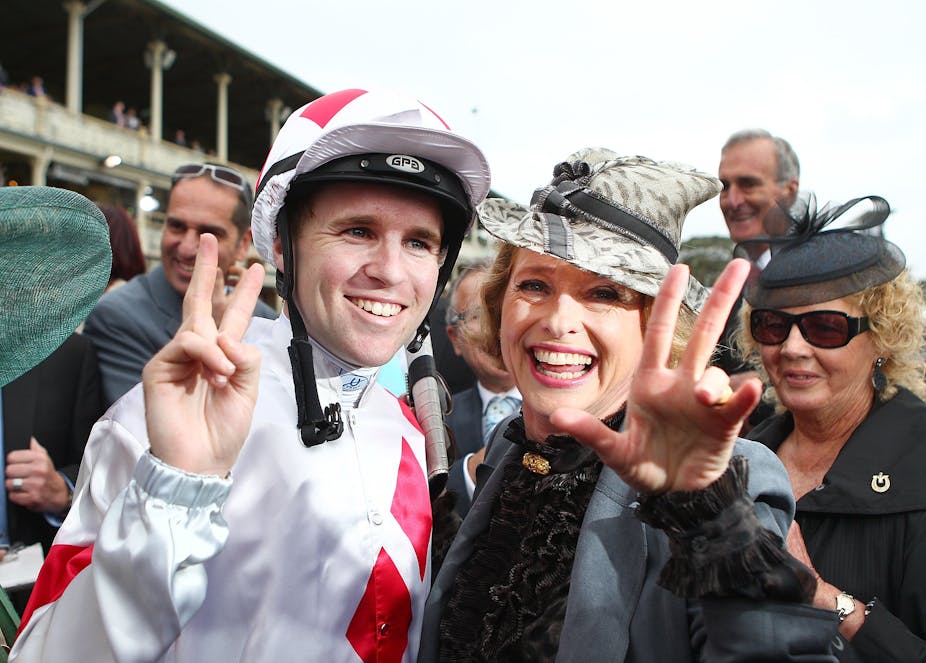Wouldn’t it be wonderful to be the part owner of a Melbourne Cup winner?
Horse trainer Gai Waterhouse says you could be, by investing in a new company called “Gai Live the Dream” (GLD).
The “live the dream” prospectus invites subscriptions for an upfront cost of A$3,500 a share, or for those that prefer it, monthly instalments totalling A$4,608.
Floating such an idea in the heady atmosphere of the spring racing carnival makes sense. It’s likely punters and horse racing fans will be tempted to throw a measly A$48 per fortnight at a chance for a share of the action.
But is it a long shot or a fair bet?
The plan is to use the subscribed funds, which depending on the uptake could be anything from A$5.25 million to A$17.5 million, to buy, acquire an interest in, train, trade and enter racehorses in high stake races. Gai Waterhouse has been engaged to train the horses.
But the prospectus also clearly states the company has no revenue. The only revenue it will earn will be from prize money or from sales of horses that the company sells at a profit. With luck, investors may see a return on their money, after the many expenses that come with owning racehorses.
Depending on the amount raised by the subscription, between 56% and 76% is budgeted to be spent on acquiring bloodstock of high racing quality. Between 9% and 12% goes to training fees; between 3% and 7% goes to directors’ fees; and between 6% and 12% goes to administration and management.
If horses that are acquired run races and win, Gai Waterhouse is entitled to get up to 15%, and if any horse owned by GLD is sold as a stallion to stand at stud the trainer will be allocated either a share or 2.5% of the sale price. The remainder goes into the coffers of GLD.
So there is a great deal of guaranteed cash outflow, but no guaranteed cash inflow. As the prospectus states: “an investment in GLD should be considered as highly speculative”.
The prospectus, quite rightly, points out the key investment risks of horse racing. They include: the health and character of the horse (will it respond to racing?); will the regulations stay the same (will the winning post be shifted?); will the racing events with prize money accept the horses?; and what if most investors take up partly paid shares so that the company has a lagged cash inflow with which to buy good horseflesh?
Then there’s the sticky question of how the Tax Office will treat GLD for GST purposes, and whether investors will be able to claim losses as a tax deduction.
There’s also the illiquidity of the shares. Given GLD is not a listed company there is no ready market through which to sell the shares.
The proposal initially runs for four years, after which shareholders will need to decide whether to continue or not. And that might depend on whether sufficient cash has been generated to pay ongoing expenses or to pay a dividend to investors.
So, just like the spring season – hope is in the air! This is when once-a-year punters come out to play. But ultimately, Gai Waterhouse’s “living the dream” involves throwing money away, with the outside chance of feeling the joy of being a horse racing winner. Sound familiar?

